After booster Falcon 9 displays the group of satellites at reference orbit (280-290 km), a calculated plane they open antennas communicate with the control center, and tested initial testing. If the tests did not reveal irreparable defects, the satellites begin the process of ascent into a working orbit (550 km).
Since there should not be more than 22 satellites in one plane, and they are launched in groups of up to 60 in one launch, a third of them begin to ascend immediately, and the other two groups wait in low orbit until, as a result of precession, the orbital plane changes by 5 -10 degrees, and then begin to climb in a new plane.
The satellite is lifted into the working orbit using electric propulsion engines (EJE) developed by SpaceX. The EJE operates on krypton (chosen because it is more than 10 times cheaper than xenon, which is usually used in EJE). Ascent to the working orbit requires an increment of dV of about 200 m / s and takes an average of 4 months. The image below shows the Starlink grouping diagram as of August 31, 2020.
The dynamics of the deployment of the Starlink grouping in time can be seen at the link www.youtube.com/watch?v=ECRuPaoAXzw .
The planes currently available are indicated vertically, in which there are 17 to 20 satellites (the distance in degrees between satellites in one plane is indicated on the vertical scale). The horizontal scale shows where the planes intersect the equator.

VIDEO: STARLINK CONSTANCE ANIMATION october 2020
Specialists of Northern Space Research have made calculations on the visibility of satellites for various geographic regions for two points in time - with the deployment of 1/3 of the network, that is, 530 satellites (expected by the end of 2020), and with a fully deployed network of 1584 satellites of the first stage.
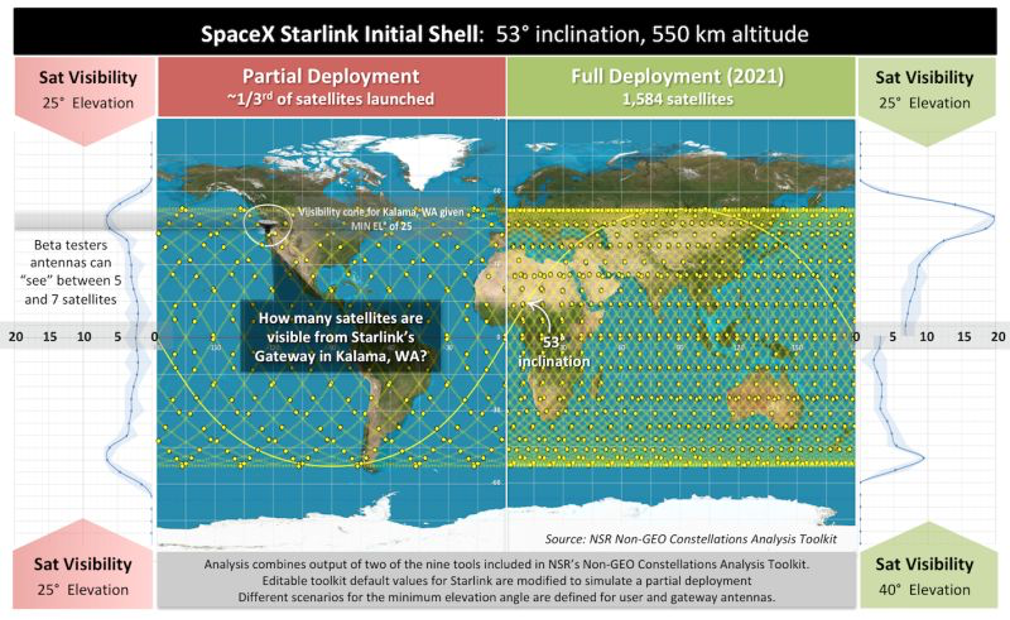
Left in red - partial network deployment by 1/3. On the right is the complete network of 1,584 satellites. It is important that even with one third of the satellite in orbit, according to the data on the plate on the left, any terminal between 53 parallels will see at least two satellites with an elevation angle of more than 25 degrees. For areas near the 50th parallel, even 5-7 satellites will appear in the visibility zone, which is formally more than enough for a full-fledged service, if we assume that the subscriber terminal can fully work at such angles. Also, the presence of such a large number of satellites in the line of sight raises the question of the need for an electromechanical drive to tilt the antenna: why tilt it to the north if there are always 1-2 satellites directly above the antenna?
The state of the group at the beginning of November 2020 was described by Elon Musk himself:
“We have good satellite coverage from ~ 57 degrees north latitude to ~ 39 degrees. More gateways means less latency. We will try to reduce it to less than 20 ms over time. As more satellites reach their operational orbit, more and more orbital planes begin to provide service. We should have 36 orbital planes (50% of the first stage constellation. Author's note), and all faulty satellites will be replaced by spare ones by January 20121. This will provide continuous coverage up to 30 degrees N. By the end of next year (2021), we hope to have full global coverage, including the poles. "
Closed beta testing of the service
It is assumed that there are three successive stages
- Closed beta testing
- Public beta testing
- Public service for everyone
Closed beta testing, judging by the tests published on the network, began at the end of July 2020 by Space X employees, due to the NDAs they signed (nondisclosure documents) there is practically no information about it. Here are the likely Starlink speed measurements from late June to early July 2020:
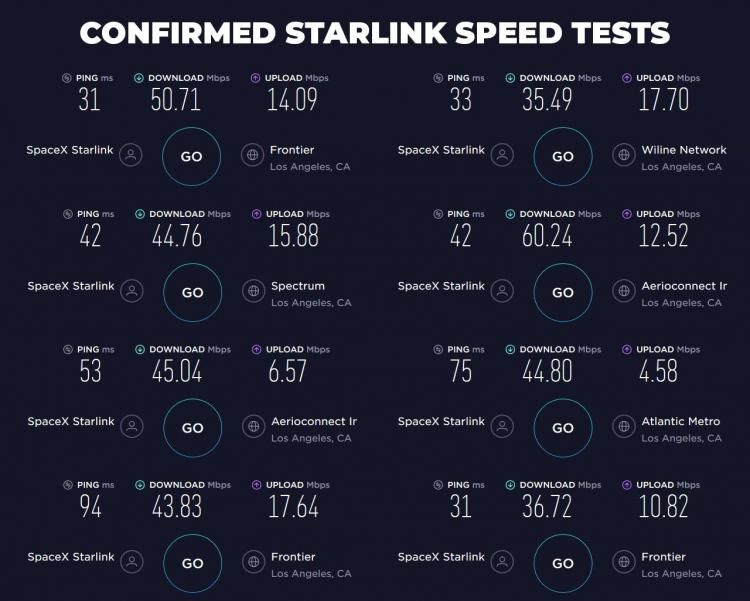
Here are the tests as of late July 2020:

According to the company itself, announced on September 3, 2020, the Starlink network achieved a transmission speed to the subscriber terminal of more than 100 Mbit / s with a delay of no more than 20 milliseconds. Here are the official test results from SpaceX's presentation:
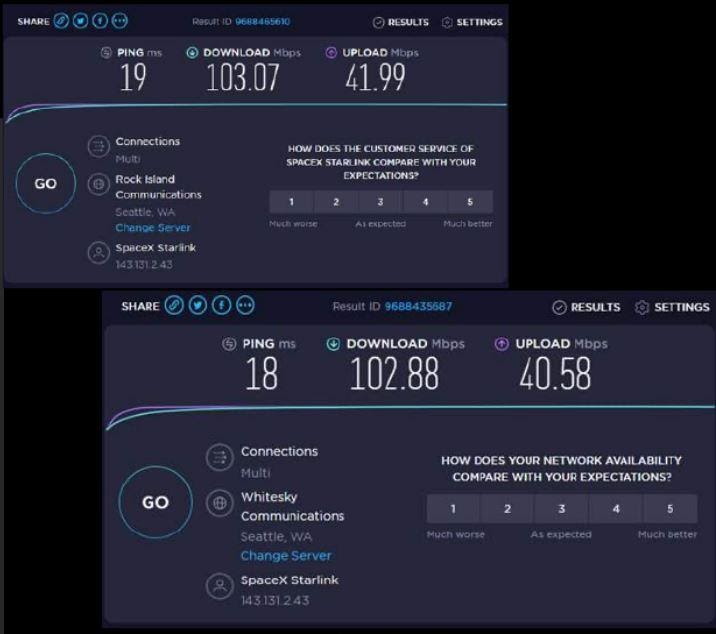
However, the test results shown as a whole, for the period September-October, cannot be called particularly impressive

We see huge volatility, the speed changes very much, with a completely empty channel with a width of 240 MHz, the maximum is reached at 150 Mbit (that is, the spectral efficiency is less than 1 bit / Hz. Let me remind you that the speed for the terminal is declared at 350 Mbit ("Japanese application"). in this case, it is still closer to 50 Mbps.
The beginning of testing the Starlink service in non-profit organizations and the first real use of the satellite broadband Internet access StarLink service occurred in September 2020 by firefighters during the extinguishing of forest fires near the city of Malden, in the state of Washington almost the entire telecommunications infrastructure (fiber-optic cables, GSM base stations, etc.).
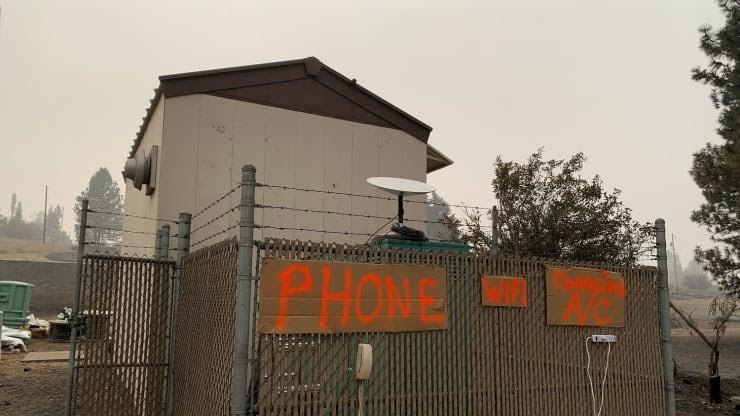
Space X employees from the local office of the company responsible for the StarLink project promptly provided local firefighters with their terminal and received a high rating for the service.

Washington State Emergency Communications Chief Richard Hall says:
"I spent 4-5 hours with terminals of other Operators trying to establish a good connection." In comparison, Hall stressed that it took him 5 to 10 minutes to set up and connect the Starlink terminal. “So Starlink is awesome for me! .. I've consistently seen less than 30 milliseconds of latency,” he said. “And a person can install the terminal alone, it doesn't require a truck, trailer or a lot of other additional equipment,” Hall said.
Also in September 2020, the StarLink terminal was transferred to the Hoh Indian Coastal Tribe in Washington state, 4 hours from Seattle.
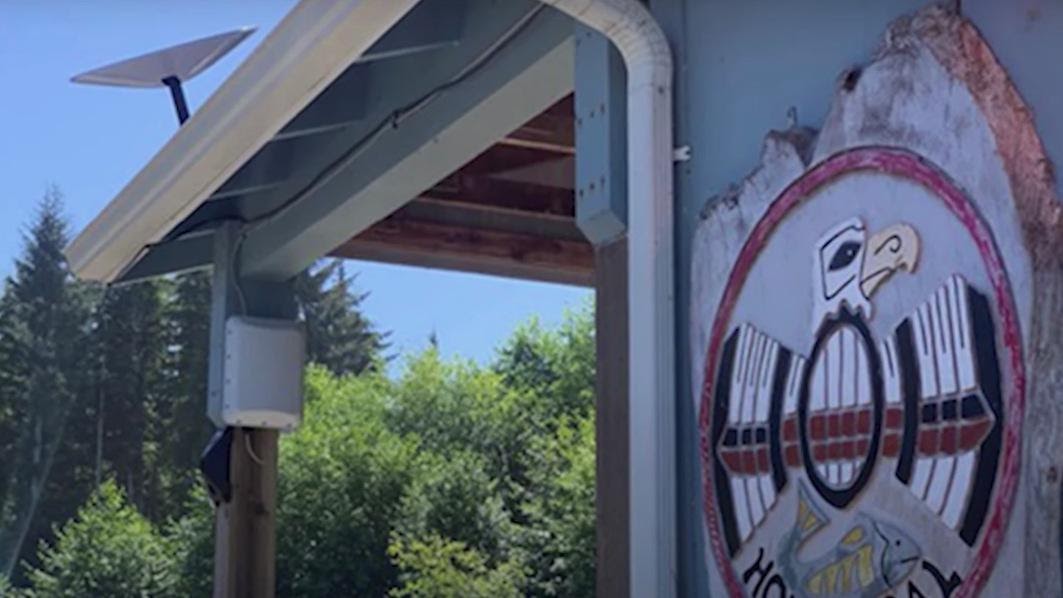
So before that the speed of Internet access there was 0.3..0.7 Mbit, then the StarLink service received a very high rating

Next, we will focus on public Beta testing and service for subscribers.
Previous materials:
- Everything about the Starlink Satellite Internet project. Part 1. Birth of the project
- Everything about the Starlink Satellite Internet project. Part 2. Starlink Network
- Everything about the Starlink Satellite Internet project. Part 3. Ground complex
- Everything about the Starlink Satellite Internet project. Part 4. Subscriber terminal